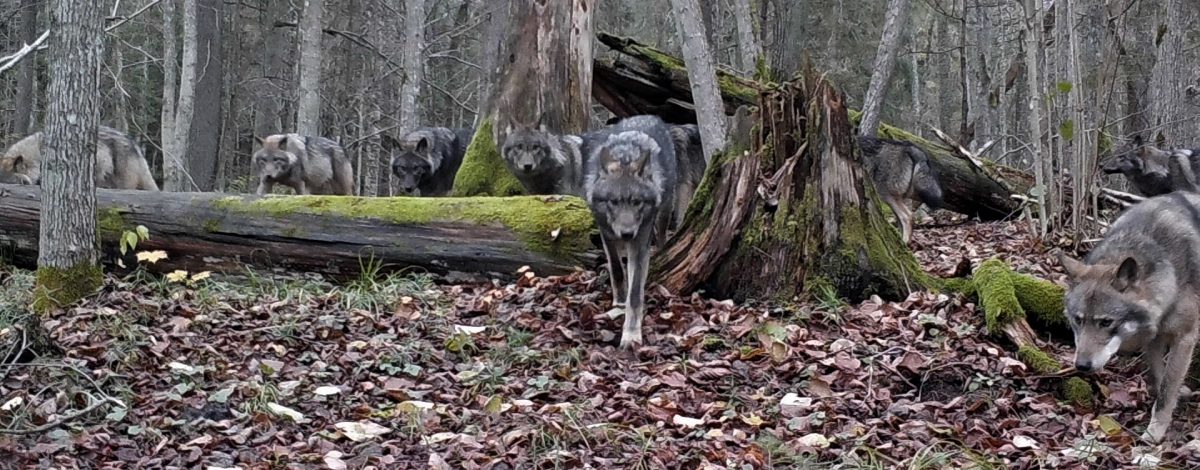This scientific book gives the results of the long-term studies on the Eurasian lynx Lynx lynx in Belarus, mainly in Naliboki Forest and Paazierre Forest. Population structure, breeding, diet and prey supply as well as the variety of behavioural traits were considered. Among behavioural questions there were investigated sociality, hunting modes, mating and denning behaviour, territorial marking, sheltering and interspecific interference. The monograph presents not only the regional aspects of lynx biology, but also includes many new findings for the Eurasian lynx overall.

Among the new findings in our study on the Eurasian lynx, I would like to briefly list them:
(1) Patched home range in connection with the prevailing mode of hunting, mainly from ambuscades in certain spots. Such hunting spots are situated in several housing areas within home range. Concerning adult males, in the cold season a patched structure of their home ranges is also connected with needs of regular guarding of thickets that are suitable for mating; and they start guarding such habitats since late autumn;
(2) Complicated mating-related behaviour in lynxes. Quite often winter housing areas of adult males are prey-poor, and that is connected with their priority of guarding of relevant thickets for mating. When a female in heat searches for an adult male with relevant thickets, it is a prevailed way of pairing in mating season. Repeated mating i.e. copulation with two males is not rare in lynxes;
(3) Strikingly distinctive hunting and marking days in adult males. There are two kinds of hunting days in males such as ambush hunting for themselves in housing areas and active (moving-stalking) foraging for mothers with kittens. Main territorial marking is carried out during special marking days, when adult males range outstandingly a lot almost without hunting;
(4) In non-mating seasons adult females (in particular mothers with kittens) mark mainly a few housing areas, where they basically stay;
(5) Adult and subadult lynxes were found surprisingly social even in non-mating seasons. Lynx couple (adult male with subadult or adult female together) and mother with kittens of the year that accepted a subadult are usual phenomenon in social structure of lynxes;
(6) Details (dens, timing, care) of denning in lynxes are considered. An active role (protecting housing area of mother, some foraging) of adult male (possible father) is substantiated;
(7) Prevailed watching-based hunting modes of lynxes with implication for rather high daily food intakes;
(8) Pronounced tree-related habits in lynxes in connection with aims of territorial and mating calls, ambush hunting, avoiding of blood-sucking insects, safe sheltering of kittens;
(9) Population-wide feeding specializations and individual-distinctive diets in connecting with dynamics of prey stock;
(10) Effectivity of hunting by subadults as a population bottleneck;
(11) Adult male lynxes as killers of vulnerable wolves and respective negative effect for the wolf population;
(12) Higher variety of lynx marking (than known up-to-date) in its performance and role as well as reaction of other mammals on lynx marking;
(13) Predominantly forest-dwelling behaviour of lynxes related to wolf presence and a switch to openings, when wolves become rare;
(14) Drastic effect of killing of red foxes and raccoon dogs by lynxes on these victim species populations.
The monograph was reviewed by Prof. dr habil. Krzysztof Schmidt from Mammal Research Institute, Polish academy of Sciences, Białowieża, Poland.
You can find the pdf-file of the book in both Google Books and Research Gate.

Hi Vadim & Ira, congratulations with the new book. It reminds us of wonderful days in the forests of Naliboki and it makes us dream of returning one day… Take care. Kind regards, Hans & Els
Hopefully, thanks and warm regards, Vadim
Another unsurpassed field study of carnivores in Belarus by Vadim Sidorovich. The book is an absolute „must read“ for anyone seriously interested in the biology of the European lynx. It shows the result of many years of extraordinarily passionate and careful work. Thank you Vadim for allowing us to participate in 2018.
Warm regards, Udo and Susanne
Dear Udo and Susanne, I am happy that you liked the book. Thanks a lot, warm regards, Vadim
Another impressive masterpiece on the Lynx. A mandatory read for anyone interested or involved with large carnivores.
I don’t know anyone else who has devoted so many years of effort and passion to their research as Vadim and Ira. Every day, year after year, in every type of weather. Only such perseverance and so much accumulated knowledge can produce such valuable results.
Congratulations on the wonderful book, and I hope to see you and the beautiful Naliboki again soon. Only such perseverance and so much accumulated knowledge can produce such valuable results. I will definitely be back to pick up the printed copy as soon as possible.
Warm greetings,
Gerard Oonk
Dear Gerard, thanks so much for your high evaluation of our work, your help and attention to us.
Warm regards, Vadim
Many greetings from the Czech republic. I am happy to read about the new book full of complex information about European lynx. I´ve downloaded the pdf file of the book and reading parts of the book and looking at all those amazing pictures made me think about having printed version of the book. Can you please tell where I can buy it? I cannot find it anywhere on the internet. It´s really I-must-have-it book. 🙂 Thank you for your answer, Jitka M.
Thanks for the kind comment. Please check your e-mail for details.
You are great person!I learnt a lot of things about wolves and lynxes thanks to your blog.Thank You!
Thanks a lot for your supportive words. I really appreciate it.
Hi Vadim, I hope you are well? I sent you an email but no reply – is it possible to buy a print copy of the lynx book? Warm wishes, Richard Morley
Dear Richard, nice to hear from your, I have sent you a message by e-mail.